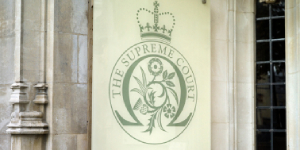
Judges: Slow progress on diversity for some groups
Being a solicitor or from an ethnic minority more than halves the odds of successfully applying for the bench compared to white barristers, the latest figures on judicial diversity have revealed.
Being a woman, however, increased the chances by a quarter.
“The independent qualities of being female, an ethnic minority, and a solicitor had statistically significant effects on recommendation,” said the Judicial Diversity Forum report, for the year to 31 March 2024.
“In comparison to a white male barrister, being female was associated with a 25% increase in the odds, or risk, of being recommended and being an ethnic minority or a solicitor was associated with a 54% and 53% decrease in the odds of being recommended, respectively.”
At the same time, the Ministry of Justice’s statisticians said intersectionality had little impact – meaning that being an ethnic minority solicitor, for example, did not make an applicant’s chances even worse.
Though, at 16%, the proportion of ethnic minority lawyers appointed to the bench in the year was roughly in line with the pool of potential applicants (15%), the proportion of actual applicants who were from ethnic minorities was far higher, at 31%.
The report showed that 26% of white applicants were shortlisted, compared to 16% of ethnic minority applicants; then 49% and 36% of shortlisted applicants respectively were then recommended for appointment.
This meant, overall, that 13% of white applicants succeeded, compared to 6% of ethnic minority applicants.
Asian and even more so black applicants fared the worst between application and appointment.
Similarly, 16% of barrister applicants were appointed, twice the proportion of solicitors. There was no such disparity between male and female candidates.
Overall, 31% of court judges and 62% of tribunal judges were from non-barrister backgrounds (almost all solicitors but some CILEX lawyers too) as the proportion of barrister judges continues to be at its highest for a decade.
Female representation among all court judges (38%) was 14 percentage points higher than in 2014 (but only 30% in the higher courts), while at 53% the figure for all tribunal judges is up 10 percentage points in the last decade. Only seven of 149 judges in the High Court and above are solicitors.
The report said the proportion of Asian and mixed ethnicity individuals in the judiciary has slowly increased since 2014 but stayed the same for black and other ethnic minority people.
Overall, 11% of judges are from ethnic minority backgrounds, lower than that for the 25-74 working age population (17%) but comparable to the older 50-74 working age population (11%).
Where two or more applicants are assessed as being of equal merit, the Judicial Appointments Commissoin can apply the ‘equal merits provision’ to select an applicant for the purpose of increasing judicial diversity – in the year, this was used to advance 94 candidates at the shortlisting stage and 16 at the selection day stage.
Bar Council chair Sam Townend KC commented: “We note that ethnic minority candidates continue to be more likely to apply and less likely to be recommended and this warrants further investigation by the Judicial Appointments Commission.
“We, therefore, welcome the Lady Chief Justice’s commitment to focus on appointment of black judges, as well as disabled judges, as a priority.”
Law Society president Nick Emmerson said: “The figures show that there is still much work to do before the judiciary truly reflects society at large.
“Gradual improvement in the proportion of women judges and those from ethnic minority backgrounds have been concentrated at the lower end of the courts.
“Solicitors made up more than half of applicants yet less than a third of recommendations, while there has been no progress on black representation on the bench in over a decade.
“The number of non-barristers who hold the position of recorder stands at 8% and has barely risen over the last 11 years. Until this percentage significantly increases, the lack of solicitors holding senior judicial posts will continue.”
The Lady Chief Justice, Baroness Carr, said a progress report on delivering the judicial diversity and inclusion strategy, which was published in November 2020, would be made public in early 2025.














Leave a Comment